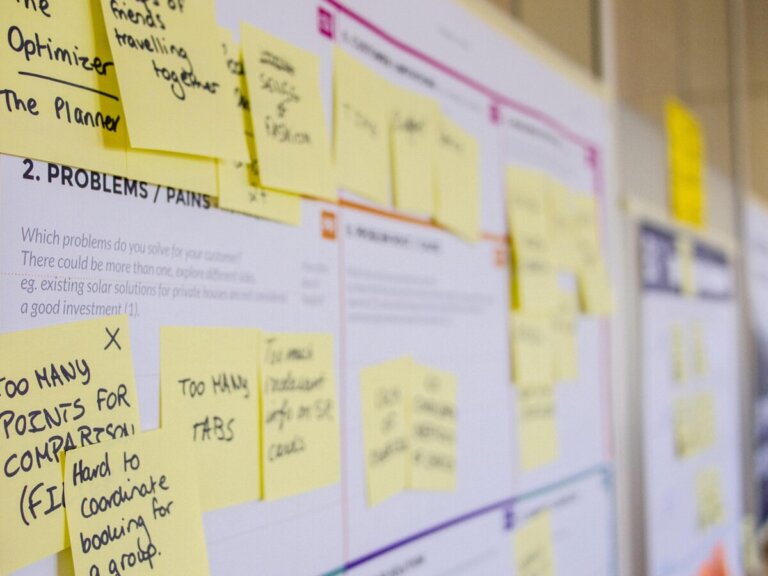
Author: Kysha Praciak
· 3 mins read · 229 views
Scrum vs Kanban: Which Should I Choose?
What is Scrum?
Scrum is a powerful framework designed to help teams work together more effectively by breaking down projects into manageable pieces and continuously experimenting and receiving feedback. Originating from agile principles, Scrum is particularly popular in software development, where it enables teams to swiftly develop and deliver new software features. By dividing the project into small tasks, prioritizing them, and tackling them in sprints, Scrum ensures steady progress and frequent releases. However, its utility is not confined to software; marketing teams and other groups can also benefit from its structured, iterative approach. While Scrum embodies agile principles, it’s important to note that agile encompasses various methodologies, and not all of them are Scrum. For teams seeking a sense of accomplishment and closure with each completed task, Scrum provides a robust framework to achieve this, fostering collaboration and incremental delivery of value.
When NOT to Use Scrum?
While Scrum is a highly effective framework for many projects, there are specific situations where it may not be the best choice.
- Projects with a Fixed Scope and Timeline: Scrum’s iterative nature can lead to scope creep without a definite end date.
- Small Teams: Very small teams may struggle with the demands of Scrum, which relies heavily on teamwork and self-organization.
- Inexperienced Team Members: Teams lacking experience may find it challenging to implement Scrum effectively.
- Complex Projects with Multiple Dependencies: Scrum’s flexibility can hinder managing complex projects with many interdependencies.
- Regulatory Compliance Projects: Projects requiring strict adherence to regulatory standards may not suit Scrum’s adaptive processes.
- Projects with High Uncertainty: High levels of uncertainty can complicate Scrum’s effectiveness, especially without a clear vision or goals.
Disadvantages of Scrum:
- Often leads to scope creep due to the lack of a definite end-date.
- High risk of project failure if team members are not fully committed or cooperative.
- Challenging to adopt Scrum in large teams.
- Success depends heavily on having experienced team members.
- Without a clear vision or goal from the Product Owner, the team can become disoriented and lose focus.
What is Kanban?
Kanban is an efficient project management framework designed to help teams visualize their work, limit work-in-progress (WIP), and streamline the transition of tasks from “Doing” to “Done.” Ideal for teams handling numerous incoming requests with varying priorities and sizes, Kanban offers a flexible approach compared to the structured nature of Scrum. It leverages Kanban boards, which transform individual to-do lists into shared visual cards, enabling team members to see existing commitments and prioritize tasks effectively. The ongoing WIP limit allows teams to pick up new work as soon as previous tasks are completed, maintaining a continuous workflow. Kanban, a Japanese term meaning “visual card,” uses these visual cues to keep processes flowing smoothly. A practical example of a Kanban pull system can be seen in fast-food restaurants, where production begins only when an order is placed. Starting without WIP limits can help teams gather data to define appropriate limits for each workflow stage, optimizing efficiency and focus.
When NOT to Use Kanban?
While Kanban is a powerful tool for managing workflow, there are scenarios where it may not be the best choice.
- Varied Story Sizes: Kanban isn’t suitable for handling varied story sizes; instead, teach the team to split stories into smaller tasks.
- Inability to Finish a Story Within One Iteration: Kanban will not inherently increase the speed of work.
- Innovative, Creative, or New Work Requiring Feedback: Use Scrum for projects needing frequent stakeholder and customer engagement, as Kanban does not provide mechanisms for this.
- Oversimplification of Tasks: Kanban can sometimes oversimplify tasks.
- Potential for Information Overload: Managing tasks visually might lead to overwhelming amounts of information.
- Limited Utility for Complex Projects: Kanban may not be suitable for highly complex projects.
- Challenges in Team Collaboration: Teams might find it difficult to collaborate effectively using Kanban.
- Difficulties in Tracking Long-Term Progress: Kanban can pose challenges in tracking long-term project progress.
Disadvantages of Kanban:
- One of Kanban’s principles is to limit WIP, but there is a risk of producing more than needed.
- Kanban can lead to bottlenecks in the workflow.
- Teams might become complacent with their work pace.
- Implementing Kanban can face resistance from team members.
- Transitioning to Kanban can cause disruption in the workflow.
- Managing Kanban in complex scenarios can be challenging.

Conclusion
In summary, both Scrum and Kanban are powerful frameworks within the agile methodology, each offering unique advantages and suited for different types of projects. Scrum is ideal for projects with defined scopes, timelines, and structured roles, providing a disciplined approach to iterative development. On the other hand, Kanban excels in environments with continuous flow, variable priorities, and the need for flexibility, making it perfect for teams managing dynamic workloads. Understanding the strengths and limitations of each framework can help you choose the right approach for your team’s specific needs, ensuring efficient project management and successful outcomes. By leveraging the appropriate methodology, you can enhance collaboration, productivity, and the overall delivery of value in your projects.
Looking for Expert IT Solutions?
Subscribe to Our Newsletter for Exclusive Tips and Updates!
Stay ahead of tech challenges with expert insights delivered straight to your inbox. From solving network issues to enhancing cybersecurity and streamlining software integration, our newsletter offers practical advice and the latest IT trends. Sign up today and let us help you make technology work seamlessly for your business!



Share